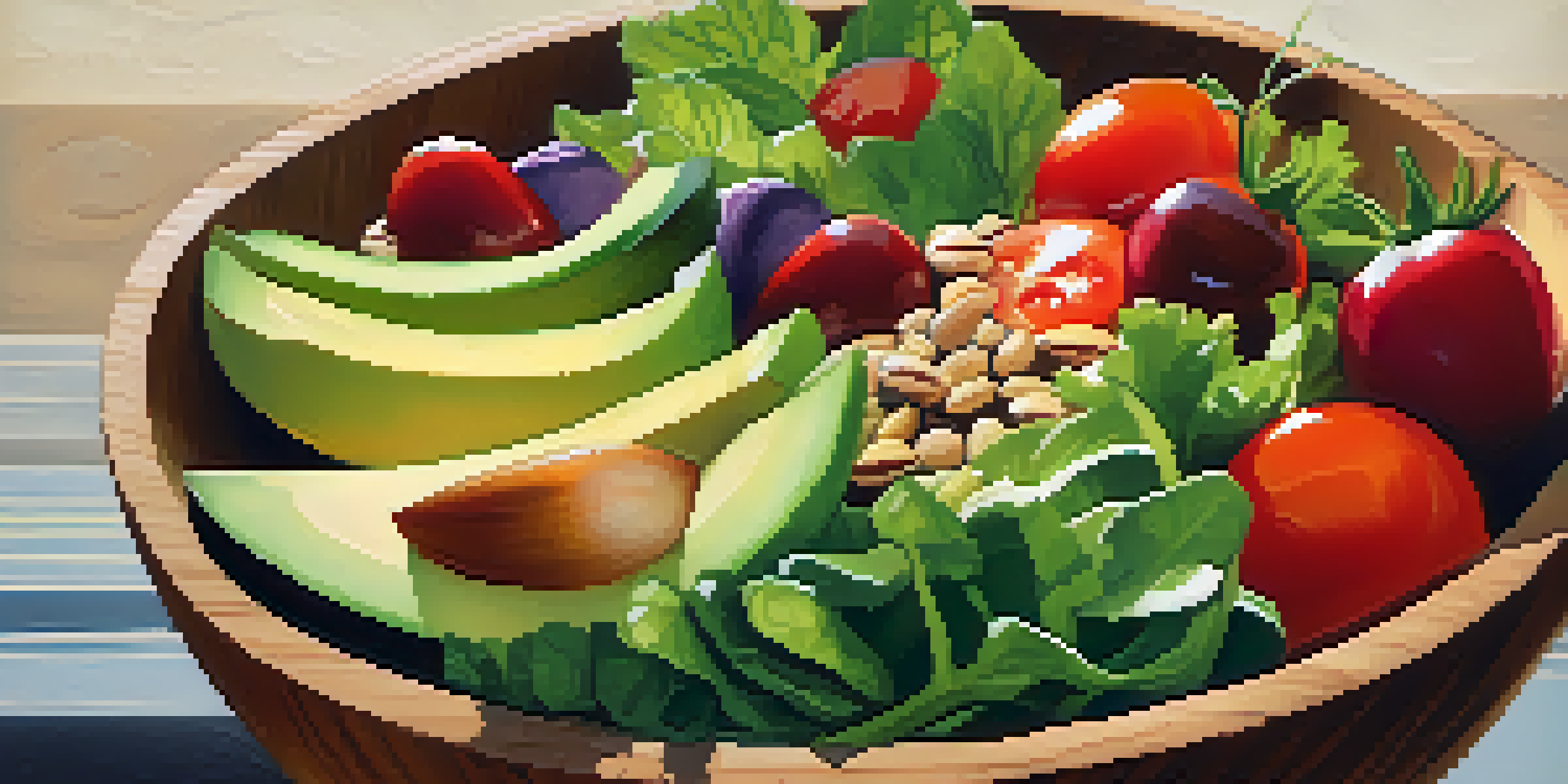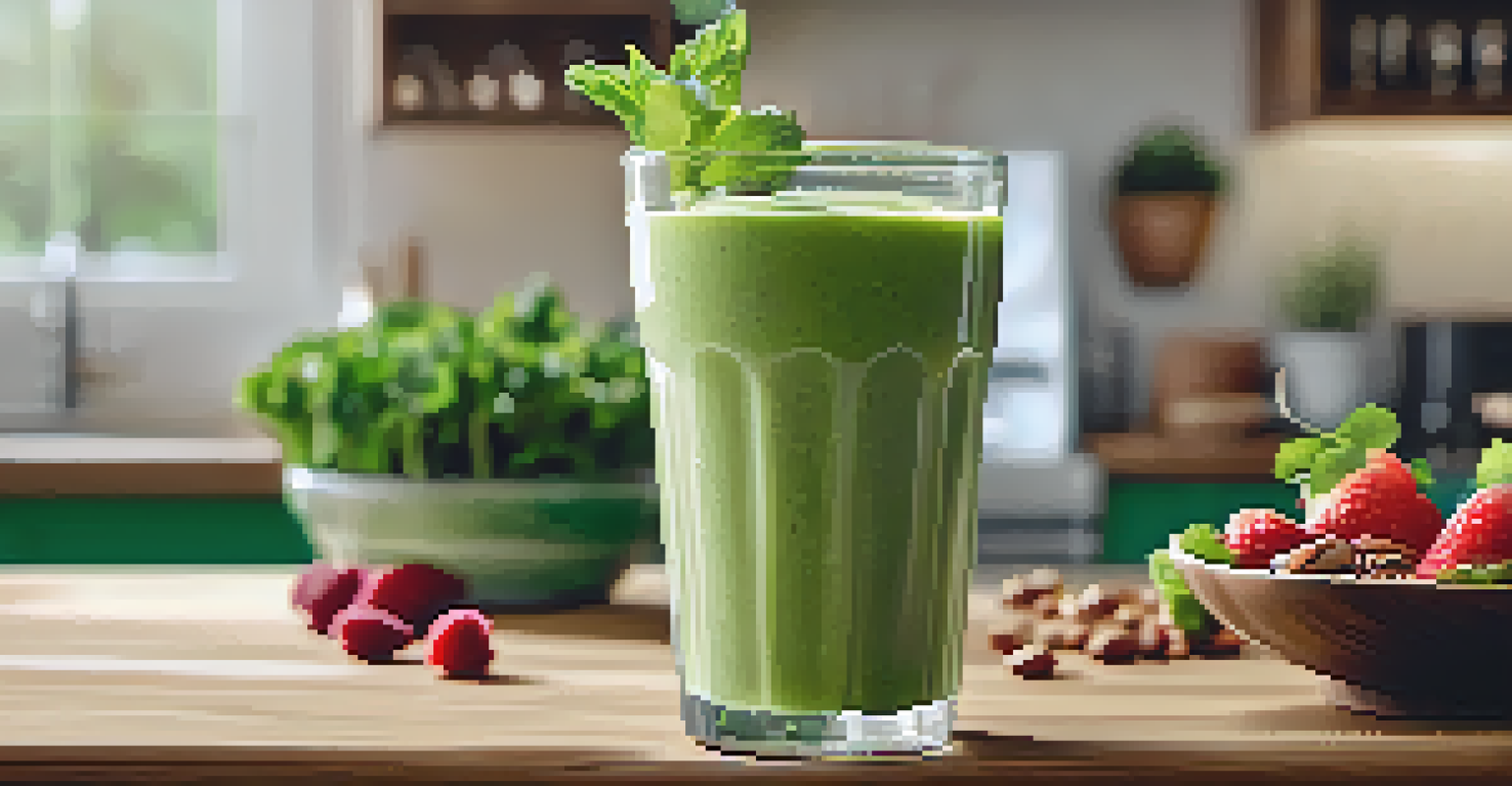Raw Food Diets: A Natural Approach to Heart Health

Understanding the Raw Food Diet and Its Basics
A raw food diet primarily consists of unprocessed, uncooked foods. This includes fruits, vegetables, nuts, seeds, and sprouted grains. The idea is to consume foods in their natural state, which many believe retains more nutrients and enzymes.
Let food be thy medicine and medicine be thy food.
Advocates of raw food diets argue that cooking can destroy vital nutrients and alter the natural properties of food. For instance, certain vitamins, like vitamin C and some B vitamins, are sensitive to heat. By eating raw, you're giving your body the best chance to absorb these nutrients.
Transitioning to a raw food diet may seem daunting, but it can be as simple as incorporating more fresh produce into your meals. Start with salads, smoothies, or raw snacks, and gradually increase the percentage of raw foods in your diet.
The Connection Between Raw Food and Heart Health
Heart health is crucial for overall well-being, and diet plays a significant role in maintaining it. A raw food diet is rich in essential nutrients, antioxidants, and fiber, all of which contribute to a healthier heart. These components can help lower cholesterol levels and reduce the risk of heart disease.

Fruits and vegetables, staples of a raw food diet, are packed with antioxidants that combat oxidative stress. For example, berries are known for their heart-protective properties, and incorporating them into your diet can be a delicious way to support heart health.
Raw Foods Boost Heart Health
A raw food diet is rich in essential nutrients, antioxidants, and fiber that can help lower cholesterol and reduce the risk of heart disease.
Moreover, the high fiber content found in raw foods aids in digestion and helps regulate blood sugar levels. This is important because maintaining balanced blood sugar is linked to preventing heart-related issues, making raw foods an appealing option for heart health.
Nutritional Benefits of Key Raw Foods for the Heart
Certain raw foods stand out for their heart-health benefits. Leafy greens, like spinach and kale, are rich in vitamins A, C, and K, along with minerals like calcium and iron. These nutrients are essential for maintaining healthy blood vessels and reducing inflammation.
You are what you eat, so don’t be fast, cheap, easy, or fake.
Nuts and seeds, such as walnuts and flaxseeds, are excellent sources of omega-3 fatty acids. These healthy fats are known to lower bad cholesterol and improve heart function. Adding a handful of these to your daily diet can make a significant difference.
Fruits like avocados and citrus are also fantastic for heart health. Avocados are high in monounsaturated fats, which can help lower cholesterol, while citrus fruits provide vitamin C and flavonoids that support blood vessel health.
How Raw Foods Help Lower Blood Pressure
High blood pressure is a major risk factor for heart disease, and raw foods can help combat this issue. Foods rich in potassium, such as bananas and leafy greens, are known to help regulate blood pressure levels. Incorporating these foods into your diet can be a tasty and effective strategy.
Additionally, the fiber content in raw fruits and vegetables promotes a healthy gut, which has been linked to lower blood pressure. A healthy gut can lead to better nutrient absorption and overall improved health, further supporting heart function.
Easy Ways to Incorporate Raw Foods
Gradually adding raw foods into your meals, such as through salads or smoothies, can make the transition enjoyable and manageable.
By choosing raw foods that are high in potassium and fiber, you're not just making a dietary choice; you're taking an active step toward protecting your heart. It’s a simple yet powerful way to maintain a healthy blood pressure.
Incorporating Raw Foods into Your Daily Routine
Making the shift to a raw food diet doesn't have to be an all-or-nothing approach. Start by dedicating one meal a day to raw foods, such as a vibrant salad or a refreshing smoothie. This gradual integration allows your palate to adjust and helps you discover new favorites.
Meal prepping can also be a game-changer. Spend some time on the weekend chopping veggies, making dips, or creating raw snacks. This way, you’ll always have healthy options on hand, making it easier to stick to your raw food goals.
Don’t forget to explore raw food recipes! There are countless resources available online that offer delicious and creative ways to enjoy raw meals. Trying out new dishes can keep your meals exciting and motivating.
Potential Drawbacks of a Raw Food Diet to Consider
While a raw food diet has many benefits, it's essential to consider some potential drawbacks. One concern is that eliminating cooked foods can lead to nutrient deficiencies in certain vitamins and minerals that are more bioavailable when cooked, such as lycopene in tomatoes.
Another issue may be the practicality of maintaining a raw food diet, especially when dining out or during social gatherings. It can be challenging to find suitable options, and this might make it harder to stick to your dietary commitments.
Consult Professionals for Guidance
Seeking advice from healthcare professionals can help you create a balanced diet that includes both raw and cooked foods for optimal health.
Lastly, some people may experience digestive discomfort when consuming large amounts of raw foods. It's crucial to listen to your body and consult a healthcare professional if you have concerns about your diet.
Consulting with Professionals for a Balanced Approach
Before diving into a raw food diet, consider speaking with a healthcare professional or a registered dietitian. They can provide personalized advice based on your specific health needs and goals. This guidance can help ensure you're getting all the necessary nutrients.
A professional can also assist in creating a balanced meal plan that incorporates both raw and cooked foods, allowing you to enjoy the benefits of each. This balanced approach can help prevent nutrient deficiencies while still promoting heart health.

Remember, the goal is to nourish your body and support your heart. Seeking expert advice can set you on the right path, making your transition to raw foods both enjoyable and sustainable.